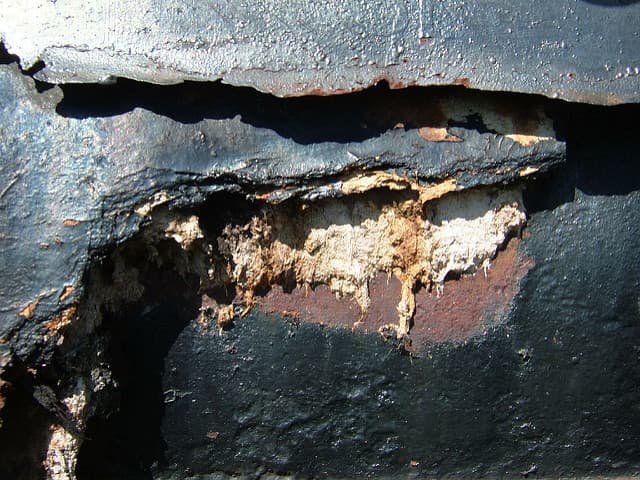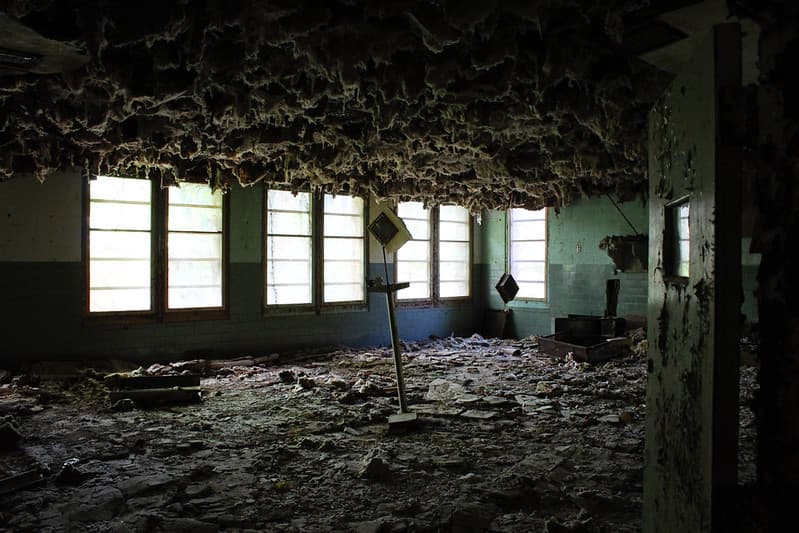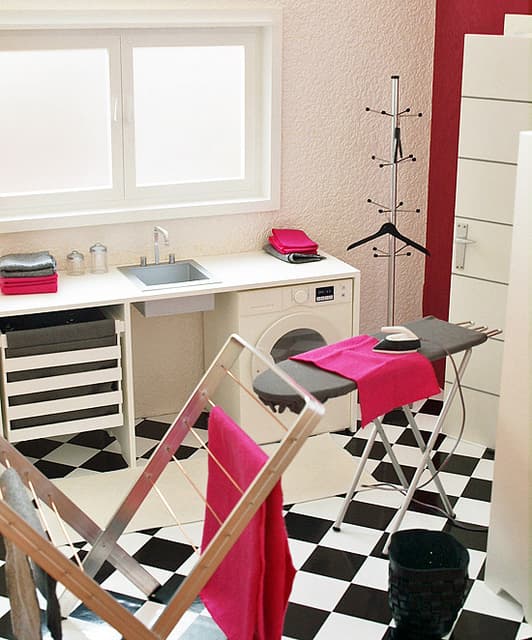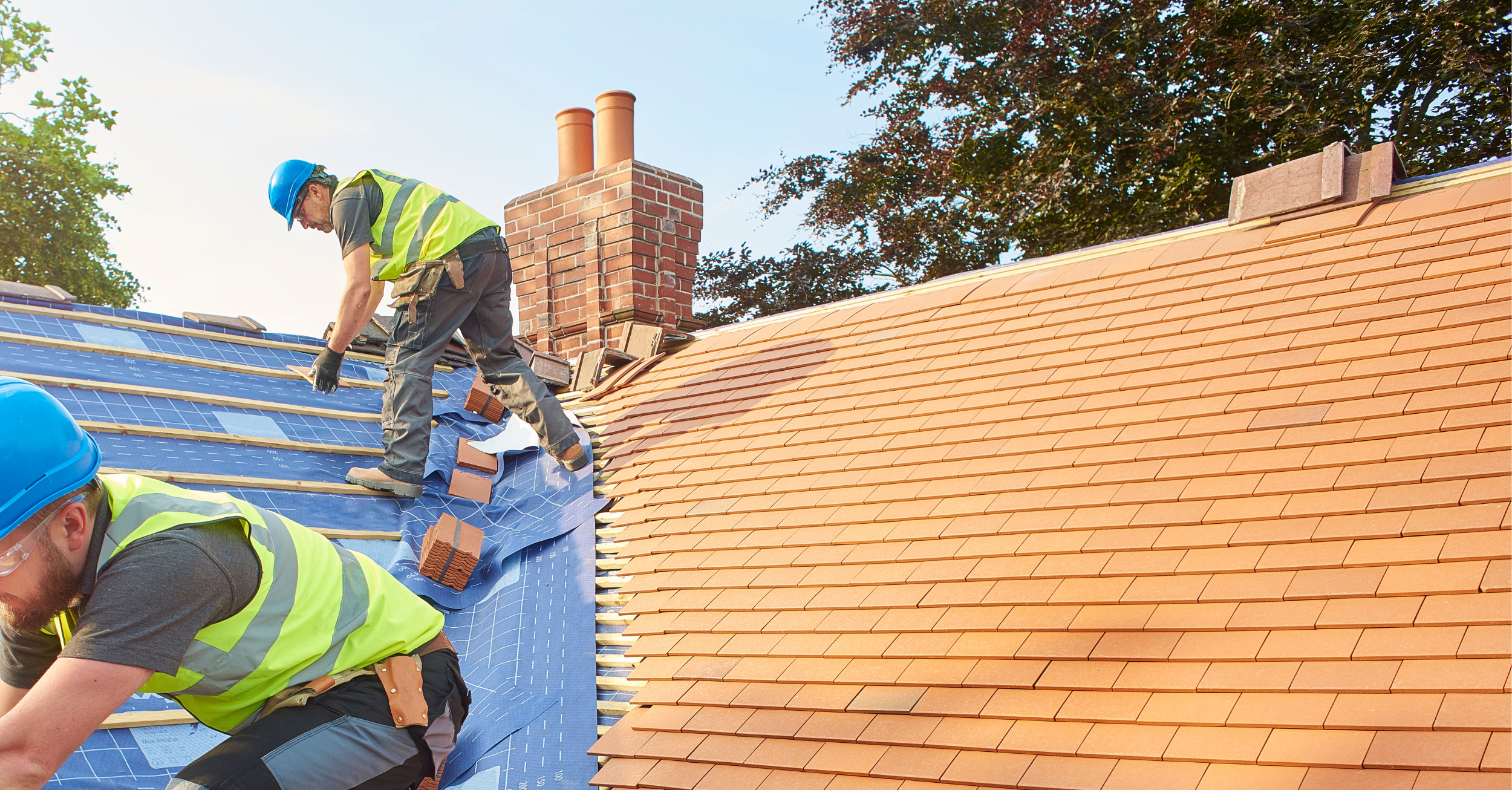Are you looking for a contractor?
Submit our quick form and get quotes now!
Table of Contents
7 min read
How To Recognize Lead and Asbestos In Your Home


7 min read
How To Recognize Lead and Asbestos In Your Home
InsulationHow To Recognize Lead and Asbestos In Your Home
It's impossible for a human being to detect asbestos or lead in plain sight, as neither can be seen or smelt by the human alone. However, both are incredibly dangerous for the health when ingested, and actions must be taken immediately if there is any suspicion of either material.
In most homes, the existence of lead and asbestos is hidden. So as a homeowner, it's important to recognize the signs and take the steps to remove either of these substances safely and correctly.
Luckily, we're here to offer ways to recognize if your home may be contaminated by lead or asbestos!
What is asbestos and how was it used in home renovations?
Asbestos was commonly used in the construction of homes between 1940-1990. However, it was later learned that prolonged exposure to this naturally occurring mineral fibre causes lung disease as well as lung cancer. This fibre isn't identifiable without a microscope and can be easily inhaled. In homes built before 1975, asbestos can be found in several household spaces and materials, including but not limited to: thermal insulation, attic insulation, vinyl floor tiles, some forms of linoleum, window caulking and glazing, plaster, fibre cement siding, roofing materials, some forms of textured paint as well as products designed for resistance to intense heat.
Unfortunately, there's no way to tell if a product contains asbestos just by looking at it. Products containing asbestos that aren't in a state of deterioration may not be releasing these dangerous fibres into the air. However, if the material is showing signs of wear and tear, cracking, or water damage, it's important to get in touch with a professional. Also, make sure to avoid touching the deteriorating material or surface, as you may unintentionally release fibres into the air.
How to Directly Deal with Asbestos
If you're going forward with any form of a home renovation or remodel, it's important to make sure that there is no presence of asbestos. The only way to be sure of this is to have a sample of the suspected material tested by a laboratory in your city. Following any confirmation that asbestos has been found, you should never attempt to remove the material yourself.
Instead, consult and hire a qualified removal specialist to discard it. This will require first checking with provincial and territorial workplace safety authorities to find out the specific qualifications or certifications required for your area. In many areas, the removal procedure regulations are very strict, and any individual removing asbestos from your home should be properly trained and qualified to do so.

Regulations that govern the removal of asbestos
Here’s a direct breakdown of the asbestos removal protocols that must be followed.
Plan the project: When you’re working with professionals, they’ll know how to determine the size and severity of the asbestos. This may matter to your municipality, as they’ll supply the permit for the removal of this substance.
Prepare the area: It’s quite important that the asbestos removal area is sealed off with plastic sheeting as well as negative air pressure units. These units will allow for the prevention of contamination outside of the work area. Surrounding surfaces should also be covered in plastic sheeting. Outside the home, there should be signs warning about the asbestos removal project underway.
Safety protective gear: It is crucial for all workers to wear protective gear, including N-100 or P-100 respirators.
Work-area protocol: Make sure that all HVAC systems in the home are disabled, as they will circulate any asbestos fibres in the air. HEPA vacuums are also important, as these can be used to remove excess dust or to clean asbestos from immovable objects.
Disposal: Anything containing asbestos will need to be wet before it can be removed and double-bagged in 6 mm plastic bags. Following this, it should be placed in a leak-tight container, properly labelled. As mentioned, asbestos can only be disposed of in specific landfills.
Decontamination units: Following the removal of the asbestos, there must be a designated area where workers can go to remove clothing, shoes, tools, and so on. Specific steps must be followed to remove clothing so that workers can safely return home without tracking any of the minerals with them.
For even more information on the specifics of this subject, we’d suggest reading our article: How does asbestos disposal work? This article takes an in-depth look at the various asbestos removal procedures as well as the risks involved.
What is lead and how was it used in home renovations?

source: Flickr, wolfy138
Lead is commonly found in paint, generally in homes that were constructed and painted before 1960. If your home was built between 1960 and 1990, it’s possible the exterior surfaces contain lead-based paint, whereas it’s more likely for lead-based paint to have been used in the interior if your home was built before 1960. In either case, it’s important to be cautious, as even small amounts of lead in interior paint is considered a health risk.
More specifically, Lead was added to paint to speed up drying, increase durability and longevity. Although lead paint isn't harmful while still attached to a wall, when the paint is removed or scraped off, as is common in home renovation projects, it becomes hazardous and can then be easily inhaled.
Lead is extremely toxic, causing a range of health problems if ingested. It's especially dangerous for pregnant women and young children, as it can lead to neurological damage and hinder the development of young brains and organs.
In 2010, the United States EPA created the Renovation, Repair, and Painting (RRP) rule to protect individuals against the health hazards that accompany lead dust. The RRP rule lowers the risk of lead contamination from home reno activities. Unfortunately, Canada does not have any similar rules or legislation, though regulations were first enacted under the Hazardous Products Act in 1976, and were updated in 2005, limiting lead to its background level for interior and exterior paints.
How to Directly Deal with Lead
If your home was built prior to the mid-1970s, you should have paint samples analyzed for the presence of lead as soon as possible. Further, if you have copper plumbing that was installed before 1987, your water should also be tested for lead. Testing for lead should be completed by a professional, as careless removal of the paint or pipes can increase the risk of contamination for both your home and family.
If the paint or water in your home tests positive, it's important to have a blood-lead-level test completed on yourself and members of your family or home. If the water turns out to be the source of lead, it is important to replace the lead-soldered lines for non-lead solders or a plastic plumbing system. The risks involved in this installation are minute compared to dealing with lead-based paint.
If the paint in your home is lead-based, practice caution and do not strip or sand the paint with heat or other chemicals. The lead dust particles are very fine. Therefore, the only method of removal is a high-efficiency particle filter, as a vacuum does not work and will instead throw the dust into the air.
Removal procedures are dependant on the situation, but techniques and equipment for the job go beyond the amateur. It is important to hire a qualified lead-abatement contractor to deal with the removal of lead-based paint from your interior or exterior surfaces.
How to minimize the risk of lead poisoning
If you are taking on a renovation project and have discovered your interior or exterior surfaces contain lead-based paint, here are some specific ways to minimize exposure to lead.
Make sure that children or pregnant women are not permitted near the work area
All furniture and furnishings should be removed from the work area
Be certain to isolate the work area, this includes covering doorways, vents, and other openings with plastic sheets, tape, or other barriers in order to prevent the spread of particles throughout your home
The room or work areas must be well ventilated. Take breaks often, making sure they’re outdoors and away from the work area.
Do not eat, drink, or smoke in areas that contain lead-based paint
At the end of each workday, make sure to thoroughly clean the work area. Any paint scraps or chips need to be labelled as hazardous waste and carefully removed so as not to contaminate other areas of the home.
Get 3 quotes for your asbestos or lead removal project
RenoQuotes.com can help you get quotes for your asbestos or lead removal project. If you submit your project to us, we’ll put you in contact with the most suitable contractors for you. Fill in the form on our homepage (only a few minutes), and you will receive quotes from trusted professionals.
Dial 1-844 828-1588 to speak with one of our customer service representatives
Last modified 2023-11-07
Looking for something else?
Related articles
The latest industry news, interviews, technologies, and resources.

N/A • 07 Nov 2023
The laundry room is a space that is notorious for being cramped. Since it is a multipurpose room, there is a constant quest to try to keep this room organized and utilitarian while still being an attractive space in the home. Especially in the case of smaller houses and apartments, the laundry room often lacks much-needed storage.

RenoQuotes.com • 07 Nov 2023
Back in the day, fireplaces were solely used for heating. However, whether traditional, electric, or gas-fueled, fireplaces are making quite a modern comeback, especially in balancing practicality and aesthetics.

RenoQuotes.com • 07 Nov 2023
Window shutters are a classic choice when it comes to indoor and outdoor home decor. They offer a hint of sophistication while increasing the privacy of your home.

Léa Plourde-Archer • 29 Apr 2024
This article is aimed at both the client and the contractor who will be responsible for the renovation project. Both have a vested interest in making sure that the contract they sign is clear and contains all the information that is important to specify. For both parties, this is a question of protection and clarity.

Cynthia Pigeon • 12 Dec 2023
Is your kitchen clad with melamine cabinets and looking duller than ever? Have you forgotten the last time you redecorated your kitchen? Either way, your cabinets are robbing you of your love of cooking and you sure don't want to miss out on new storage ergonomics. So it's about time you give your kitchen some pizzazz!